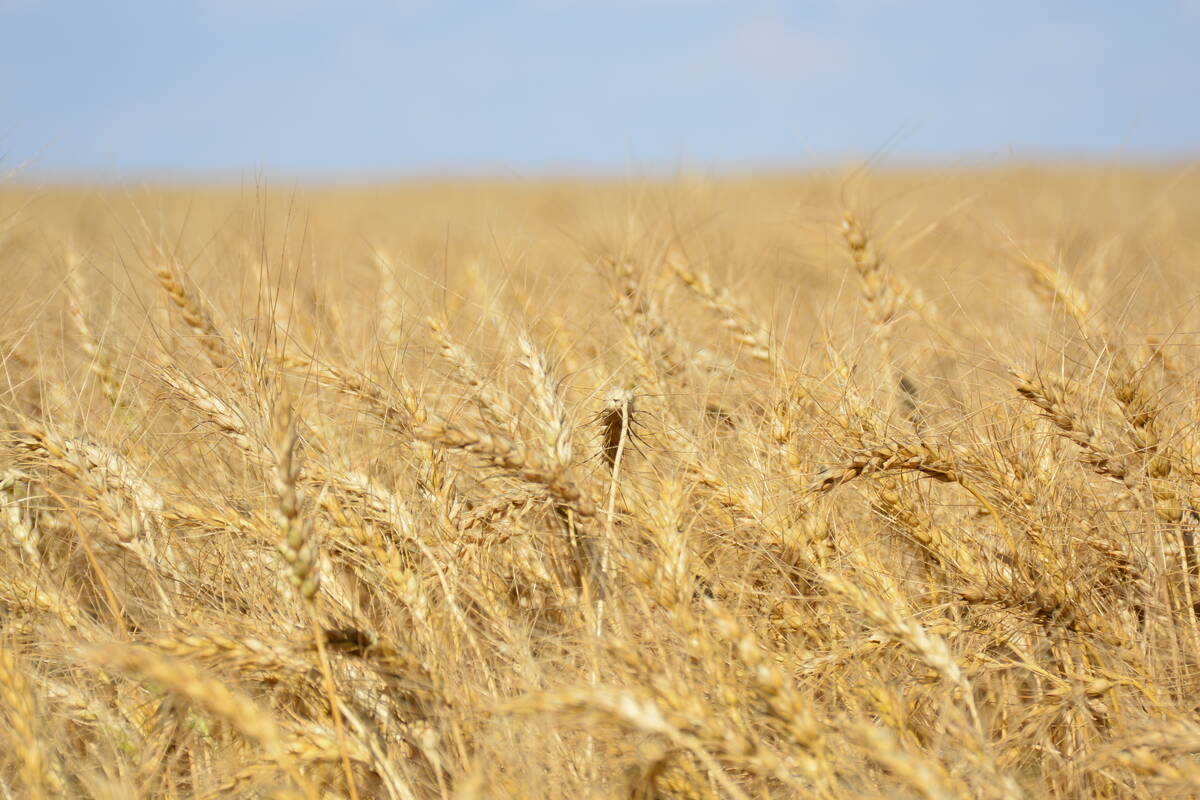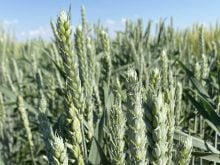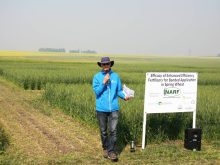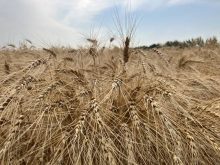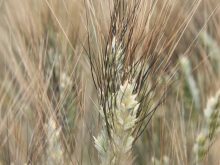SASKATOON — It won’t be another bin-busting spring wheat crop in the United States this year.
“It’s definitely a good crop, above average in a lot of areas, but maybe not an over-the-top crop like we had last year,” said Jim Peterson, administrator of the North Dakota Wheat Commission.
He took part in the wrap-up event of the Wheat Quality Council’s spring wheat and durum crop tour and spoke to a variety of people who participated.
Read Also

Agritechnica Day 2: The future of tractor power, building quicker crop apps and large farms and tech
Agritechnica Day 2: The future of tractor power, building quicker crop apps with Syngenta and large farms and tech
“They were surprised with how clean the fields were,” said Peterson.
“I think they were expecting a little more disease.”
They also mentioned that there was more lodging than the past few years due to recent wind and rain events.
The average yield of the 292 spring wheat fields that were toured was estimated at 49 bushels per acre, down from 54.5 last year.
The average durum yield of 14 fields was 37 bu. per acre, down from 45.3.
Those estimates are lower than the U.S. Department of Agriculture’s July 11 forecast of 51.7 and 38.7 bu. per acre, respectively.
Peterson said the USDA’s estimate for North Dakota is 59 bu. per acre, identical to last year’s record.
He believes the government did not properly account for the damage caused by the hot and dry June conditions in the northern part of the spring wheat growing region.
He is much more comfortable with the tour’s estimate, which is five bu. less than last year’s.
The USDA will update its forecasts in its Aug. 12 crop production report.
Western Producer markets desk analyst Bruce Burnett has no qualms with the council’s numbers.
“Those appear to be fairly realistic estimates to me,” he said.
“It comports with what I was seeing on the Canadian side just a few miles north of the border.”
Burnett conducted a mid-July crop tour of Western Canada and is forecasting an average spring wheat yield of 51.5 bu. per acre, which would be similar to last year.
His durum yield estimate is 31.4 bu. per acre, down 2.4 from last year.
Crops in south-central and southeastern Saskatchewan and parts of southern Alberta were struggling.
Burnett noted that western North Dakota and Montana are directly below Western Canada’s dry region, so a reduction from last year’s yields makes sense.
“The crops have suffered in some of those regions,” he said.
Slightly more than half (53 percent) of Montana’s spring wheat crop was rated in good to excellent condition as of July 27.
That compares to 87 per cent in North Dakota and 92 per cent in Minnesota.
Peterson said it is frustrating that the market has not responded to the tour’s findings.
He thinks it is too consumed with the huge crop of U.S. corn that is on the way and the better-than-anticipated hard red winter wheat crop.
The market knows that the spring wheat crop will be smaller than last year, but it will still be in line with the five-year average, so it is not overly concerned about the tour’s findings.
However, Burnett said there is another potential threat to the U.S. crop that could be a market-mover.
Persistent rain near the U.S. border could be causing some quality issues in northern North Dakota and Montana.
“It will probably improve the crop fill for there, but also we’d have to look at some quality issues if (the rains) continue,” he said in a July 28 interview.
A lot of Canada’s trade with the U.S. depends on quality differentials. If the U.S. has poor quality and Canada has good qualit,y there could be a strong export program to that important market.
Peterson agreed that the excessive moisture could delay harvest and start causing quality issues if the crop doesn’t dry out by the second weekend of August.


